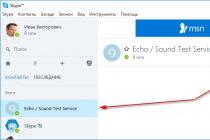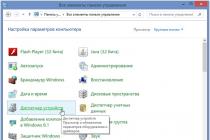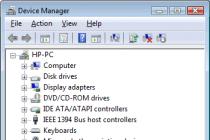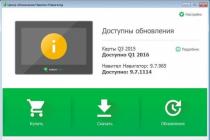
SHORT DESCRIPTION
Power Meters Series Anritsu ML2490A are high-speed digitizers and processors of signals coming from power sensors (sensors) connected to them. The Anritsu ML2495A is single channel and supports one sensor, while the Anritsu ML2496A can operate with two different sensors at the same time. Depending on the types of connected sensors, the frequency range can be from 100 kHz to 65 GHz.
Thanks to the very high speed digitizing (time resolution up to 1 ns) meters of the Anritsu ML2490A series can be used for developing and configuring radars, and the bandwidth of these instruments, equal to 65 MHz, allows them to be used at all stages of construction and operation wireless systems 3G, 4G and 5G communications, including next generation systems based on sophisticated modulation technologies such as OFDM.
In addition to pulse and peak power sensors, the Anritsu ML2490A Series can be connected to a variety of CW (stationary) radio (CW) sensors, making them versatile in use. You can download a full description of all the characteristics of the Anritsu ML2490A series below on this page in the section.
Main characteristics:
Number of channels: 1 (model ML2495A) or 2 (model ML2496A).
Frequency: 100 kHz - 65 GHz (depends on the sensor).
Bandwidth (video bandwidth): 65 MHz.
Typical rise time: 8 ns (with MA2411B pulse generator).
Time resolution: 1 ns. Built-in power calibrator (50 MHz and 1 GHz).
Optimally suited for radar applications and wireless networks(4G and 5G).
Power measurements: Average, Min, Max, Peak, Crest, PAE (Power Added Efficiency).
Screen 8.9 cm (resolution 320 x 240). Interfaces: Ethernet, IEEE-488 (GPIB), RS-232.
Weight: 3 kg. Dimensions: 213 x 88 x 390 mm. Working temperature: from 0 ° С to + 50 ° С.
Accurate measurement of the strength of any radio signal
DETAILED DESCRIPTION
The Anritsu ML2490A RF Power Meter Series offers the best performance compared to the other two Anritsu RF Power Meter Series (ML2480B and ML2430A). The ML2490A series includes two models: the single-channel ML2495A and the dual-channel ML2496A. Both models work in conjunction with external sensors (sensors). With meters Anritsu power The ML2490A is compatible with six series of sensors that solve a very wide range of tasks in the frequency range from 10 MHz to 50 GHz and in the power range from -70 dBm to +20 dBm.
Depending on the type of sensor connected, the Anritsu ML2490A meters can measure the following signal strength parameters: Average, Min, Max, Peak, Crest, Rise- time (rise time), PAE (Power Added Efficiency), etc. For sensor calibration, Anritsu ML2490A instruments come standard with a built-in power calibrator at two frequencies: 50 MHz and 1 GHz.
This photo shows the Anritsu ML2495A Single Channel RF Power Meter and Anritsu ML2496A Dual Channel RF Power Meter, along with two of the best sensors: Anritsu MA2411 Pulse Sensor (up to 40 GHz) and Anritsu MA2491A Broadband Sensor (up to 18 GHz).

Anritsu ML2495A single-channel meter (top) and Anritsu ML2496A two-channel meter (bottom) along with MA2411 pulse power sensor and MA2491A broadband power sensor.
Anritsu MA2411B pulse power sensor (sensor)
The Anritsu ML2495A and ML2496A Power Meters, together with the Anritsu MA2411B Transmitter, are ideal for measuring pulsed RF signals over the 300 MHz to 40 GHz frequency range. With a typical 8 ns rise time and 1 ns resolution, it is possible to directly measure the characteristics of radar pulses, as well as many other types of signals that have a pulse or burst structure.

This photo shows a screenshot of the Anritsu ML2496A Power Meter screen showing RF edge measurements. The measurements were carried out using an Anritsu MA2411B pulse power sensor. The horizontal axis is scaled 20 ns per division, and the vertical axis is 3 dB per division. The signal coming from the sensor was digitized at a rate of 62.5 MS / s.

This photo shows a screenshot of the Anritsu ML2496A Power Meter screen showing the measurements of four consecutive RF pulses. The horizontal axis is scaled 2 μs per division, and the vertical axis is 5 dB per division. For each pulse, you can measure: rise time, fall time, duration and other parameters, including the pulse repetition interval PRI (Pulse Repetition Interval). The screen also displays the results for a group of pulses: minimum, maximum and average power values.

Measurement of parameters of four consecutive RF pulses.
When measuring strong radio signals, attenuators or couplers are often used. The Anritsu ML2490A Series Power Meters have the ability to automatically account for the value of an external attenuator or coupler so that the readings on the screen match the actual power.
Before using the Anritsu MA2411B Sensor with the ML2490A Series Power Meter, you must calibrate them together. To do this, on the front panel of the power meter there is a reference signal output (Calibrator) with a frequency of 1 GHz and an amplitude of 0 dBm (1 mW). By connecting the sensor to this output and pressing the appropriate menu item, you will calibrate the sensor and zero the errors of the measuring path, which will prepare the device for accurate measurements.
The Anritsu MA2411B is optimized for pulsed and broadband modulated signals, but can be used to accurately measure stationary (CW) and slowly changing RF signals. The corresponding screenshot is shown in this photo.

Anritsu MA2490A and MA2491A Broadband Power Sensors
To measure the parameters of telecommunication signals, as well as some types of pulse signals, two broadband sensors are designed: Anritsu MA2490A (50 MHz to 8 GHz) and Anritsu MA2491A (50 MHz to 18 GHz). Both sensors provide 20 MHz bandwidth (also called video bandwidth or response speed), which is enough to accurately measure rapidly changing signals such as 3G / 4G, WLAN, WiMAX and the pulses of most types of radar systems. The rise time of these sensors in the pulsed measurement mode is 18 ns.
The impulse characteristics of the MA2490A and MA2491A sensors are slightly worse than that of the MA2411B, which was mentioned above, but the minimum measured power is -60 dBm, instead of -20 dBm for the MA2411B. A significant expansion of the lower power threshold is achieved due to the presence of an additional measuring path inside the sensors, which is automatically switched on at low power values.

This photo shows a screenshot of the screen of the Anritsu ML2496A power meter with the results of measurements of the parameters of the GSM signal. The measurements were carried out using an Anritsu MA2491A broadband power sensor. The horizontal axis is scaled 48 µs per division, and the vertical axis is 5 dB per division. The peak power of individual signal fragments reaches 12 dBm.

Measurement of GSM signal parameters using the Anritsu MA2491A broadband sensor.
Anritsu MA2440D Series High Precision Diode Power Sensors
This series of high-precision sensors is designed for radio signals with low rate of change or modulation (eg TDMA), as well as stationary (CW - Continuous Wave) signals. The response speed (video bandwidth) of these sensors is 100 kHz and the rise time is 4 μs. All sensors of the MA2440D series have a built-in 3 dB attenuator, which significantly improves the matching (SWR) of the input radio connector of the sensor. Wide dynamic range of 87 dB and linearity better than 1.8% (up to 18 GHz) and 2.5% (up to 40 GHz) make these sensors ideal for a wide range of applications, including measuring the gain and attenuation of radio devices.
The Anritsu MA2440D sensor series consists of three models with different upper frequency range and input connector type: Model MA2442D (10 MHz to 18 GHz, connector N (m)), model MA2444D (10 MHz to 40 GHz, connector K (m)) and model MA2445D (10 MHz to 50 GHz, connector V (m)). As an example, this photo shows an Anritsu MA2444D sensor with a K (m) connector.

Anritsu MA24000A Series High Precision Thermal Power Sensors
This series of high-precision sensors is designed for stationary (CW - Continuous Wave) and slowly changing radio signals. The rise time for these sensors is 15 ms. The principle of operation of the sensors of this series is based on the thermoelectric effect, which makes it possible to accurately measure the average (average) power of any radio signal, regardless of its structure or type of modulation. Dynamic range of these sensors is 50 dB and the linearity is better than 1.8% (up to 18 GHz) and 2.5% (up to 50 GHz).
The Anritsu MA24000A sensor series consists of three models with different high frequency range and input connector type: Model MA24002A (10 MHz to 18 GHz, connector N (m)), model MA24004A (10 MHz to 40 GHz, connector K (m)) and model MA24005A (10 MHz to 50 GHz, connector V (m)). All three Anritsu MA24000A Series sensors are shown in this photo.

Principle of Operation and Internals of Anritsu ML2490A Series Power Meters
Power sensors connected to the Anritsu ML2490A Series provide the function of converting the high frequency signal to be measured into a low frequency signal. This low-frequency signal is fed from the sensor to the input of the ML2490A series meter, digitized using the built-in ADC, processed by a digital signal processor and displayed on the instrument display.
This figure shows the block diagram of the ML2495A single channel model. In this block diagram, two ADCs (analog-to-digital converters) are highlighted in green, with the help of which the low-frequency signal from the power sensor connected to the meter is digitized. If an Anritsu MA2440D diode sensor or Anritsu MA24000A thermoelectric sensor is connected, then digitization is performed using a 16-bit ADC. And if an Anritsu MA2411B pulse generator or Anritsu MA2490A or MA2491A broadband sensors are connected, then digitization is performed using a high-speed 14-bit ADC.

Block diagram of the Anritsu ML2495A single-channel power meter.
And this is how it looks internal organization Anritsu ML2490A Series Power Meter. In the center there is a small rectangular board of the built-in calibrator for 50 MHz and 1 GHz, the high-frequency cable with which is connected to the N connector on the front panel. Under the calibrator board is a large measurement board containing the analog part, an ADC, and an array of programmable logic arrays. Immediately below the measurement board is a second large digital processing and control board containing a DSP (digital signal processor), a microcontroller, and digital display and control units.

All Anritsu ML2490A Series Power Meters ship with computer program remote control Anritsu PowerMax... This program runs on Windows compatible personal computer and allows you to remotely control the operation of a single-channel Anritsu ML2495A or dual-channel Anritsu ML2496A. Taking measurements with PowerMax simplifies initial instrument setup, speeds up measurement processing, and makes it easy to document and store results.
An example of the Anritsu PowerMax main window is shown in this screenshot. In this case, the two-channel Anritsu ML2496A model is controlled, to the first channel of which the Anritsu MA2411B impulse power sensor is connected, and the Anritsu MA2491A broadband power sensor is connected to the second channel. To enlarge the image, click on the photo.

Anritsu ML2490A Series Power Meters come with Anritsu PowerMax software.
Click on the photo to enlarge the image.
Anritsu ML2490A Meters and Power Sensors Specifications
Below is a list of the key specifications for the Anritsu ML2490A Series Power Meters. For detailed specifications of the meters, see the section below on this page.

Main technical characteristics of Anritsu ML2490A series power meters.
Below is a list of the main technical characteristics of the power sensors (power sensors) different types which are compatible with Anritsu ML2490A series meters. For detailed technical characteristics of sensors, see below on this page in the section.

Key Features of Anritsu ML2490A Series Compatible Power Sensors.
Anritsu ML2490A Series Power Meters Package
| Name | Short description |
| Anritsu ML2495A | Single-channel power meter for pulsed, modulated and stationary radio signals |
| or | |
| Anritsu ML2496A | Two-channel power meter for pulsed, modulated and stationary radio signals |
| a plus: | |
| 2000-1537-R | 1.5 meter cable for sensor connection (1 pc. For each channel) |
| - | Power cable |
| - | Optical disc with documentation and PowerMax software |
| - | Calibration certificate |
| - | 1 year warranty (it is possible to extend the warranty period up to 3 and 5 years) |
Anritsu ML2490A Series Power Meter Options and Accessories
Main options:
- option 760-209
(rigid transport case for transporting the device and accessories).
- option D41310(soft bag for transporting the device with a shoulder strap).
- option 2400-82
(set for rack mounting one meter).
- option 2400-83
(kit for rack mounting two meters).
- option 2000-1535
(protective cover for the front panel).
- option 2000-1536-R(0.3 meter cable for connecting the measuring sensor).
- option 2000-1537-R(1.5 meter cable for connecting the measuring sensor).
- option 2000-1544
(RS-232 cable for flashing the device).
Compatible power sensors (sensors):
- sensor Anritsu MA2411B(pulse sensor from 300 MHz to 40 GHz, from -20 dBm to +20 dBm).
- sensor Anritsu MA2490A(broadband sensor 50 MHz to 8 GHz, -60 dBm to +20 dBm).
- sensor Anritsu MA2491A(broadband sensor from 50 MHz to 18 GHz, from -60 dBm to +20 dBm).
- sensor Anritsu MA2472D(standard diode sensor from 10 MHz to 18 GHz, from -70 dBm to +20 dBm).
- sensor Anritsu MA2473D(standard diode sensor from 10 MHz to 32 GHz, from -70 dBm to +20 dBm).
- sensor Anritsu MA2474D(standard diode sensor from 10 MHz to 40 GHz, from -70 dBm to +20 dBm).
- sensor Anritsu MA2475D(standard diode sensor from 10 MHz to 50 GHz, from -70 dBm to +20 dBm).
- sensor Anritsu MA2442D(high-precision diode sensor from 10 MHz to 18 GHz, from -67 dBm to +20 dBm).
- sensor Anritsu MA2444D(high-precision diode sensor from 10 MHz to 40 GHz, from -67 dBm to +20 dBm).
- sensor Anritsu MA2445D(high-precision diode sensor from 10 MHz to 50 GHz, from -67 dBm to +20 dBm).
- sensor Anritsu MA2481D(universal sensor from 10 MHz to 6 GHz, from -60 dBm to +20 dBm).
- sensor Anritsu MA2482D(universal sensor from 10 MHz to 18 GHz, from -60 dBm to +20 dBm).
- sensor Anritsu MA24002A(thermoelectric sensor from 10 MHz to 18 GHz, from -30 dBm to +20 dBm).
- sensor Anritsu MA24004A(thermoelectric sensor from 10 MHz to 40 GHz, from -30 dBm to +20 dBm).
- sensor Anritsu MA24005A(thermoelectric sensor from 10 MHz to 50 GHz, from -30 dBm to +20 dBm).
Documentation
This documentation in PDF format contains the most Full description capabilities of Anritsu ML2490A series power meters, their technical characteristics and operating modes:
Description of Anritsu ML2490A Power Meters and Sensors (in English) (12 pages; 7 MB)
Specifications of Anritsu ML2490A Meters and Sensors (in English) (12 pages; 1 MB)
Anritsu ML2490A Power Meters User Manual (English) (224 pp .; 3 MB)
Anritsu ML2490A Meter Programming Guide (English) (278 pp .; 3 MB)
Brief information about devices for measuring the strength of radio signals (in English) (4 pages; 2 MB)
And here you can find our tips and other useful information on this topic:
Anritsu RF Meter Series at a Glance
Anritsu Handheld RF Analyzer Series at a Glance
How to buy equipment cheaper - discounts, special prices, demo and used devices
To simplify the process of choosing a power meter or sensor, you can use our experience and recommendations. We have more than 10 years of practical experience in deliveries and we can immediately answer many questions about models, options, delivery times, prices and discounts. This will save you time and money. To do this, just call us or write to us at
Exercise. 3
Theoretical part. 4
Basic provisions. 4
Units of measurement of radio signal levels. 5
Okamura-Hata model. 7
Model COST231-Hata. eight
Model COST 231-Walvis-Ikegami. eight
Research results. eleven
Exercise
1. Conduct comparative studies of empirical models of radio wave attenuation by Okamura-Khata, COST 231-Khata and COST 231 Walvis-Ikegami with the given characteristics of the communication channel for option 4 of the guidelines;
3. Prepare a report on the work with the following sections: 1) assignment, 2) theoretical part (text attached) and 3) research results - two figures with three graphs each.
Note: the calculation of the COST231 Walvis-Ikegami model is performed only for the case of line of sight.
Theoretical part
Basic Provisions
Studies of radio wave propagation in urban environments have great importance in the theory and technology of communication. Indeed, the largest number of residents (potential subscribers) live in cities, and the conditions for the propagation of radio waves differ significantly from propagation in free space and semi-free space. In the latter case, propagation over a regular earth's surface is understood when the radiation pattern does not intersect with the earth's surface. In this case, with directional antennas, the attenuation of radio waves is determined by the formula:
L = 32,45 + 20(lgd km + lgf MHz) – 10lgG lane - 10lgG pr, dB =
= L 0 - 10lgG lane - 10lgG pr, dB. (one)
where L 0 - main attenuation of free space, dB;
d km- distance between transmitter and receiver, km;
f MHz- operating frequency, MHz;
G lane and G pr- the gains of the transmitting and receiving antennas, respectively, dBi.
Major weakening L 0 is defined for isotropic antennas that radiate uniformly in all directions and receive as well. Therefore, attenuation occurs due to energy dissipation into space and a small input to the receiving antenna. When using directional antennas oriented with the main beams towards each other, the attenuation is reduced according to equation (1).
The task of the research is to determine the radio channel carrying the message (radio signal), which ensures the required quality and reliability of communication. The communication channel in urban conditions is not a deterministic value. Besides direct channel There is interference between the transmitter and receiver due to multiple reflections from the ground, walls and roofs of structures, as well as the passage of radio signals through buildings. Depending on the relative position of the transmitter and receiver, there may be cases where there is no direct channel, and the signal with the highest intensity must be considered as the received signal in the receiver. V mobile communications when the antenna of the subscriber receiver is at a height of 1 - 3 meters from the ground, these cases are dominant.
The statistical nature of the received signals requires assumptions and constraints within which decisions can be made. The main assumption is the stationarity of a random process with the independence of interference from each other, that is, the absence of cross-correlation. The implementation of such requirements led to
separation of urban radio communication channels into three main types: Gauss, Rice and Rayleigh channels.
The Gaussian channel is characterized by a dominant direct beam and little interference. The mathematical expectation of the attenuation of the radio signal is described by the normal law. This channel is inherent in television signals from the TV tower when received on collective antennas in residential buildings. The Rice Channel is characterized by the presence of direct rays, as well as rays reflected and transmitted through buildings, and the presence of diffraction on buildings. The mathematical expectation of the attenuation of a radio signal is described by the Rice distribution. This channel is inherent in networks with a raised antenna over buildings of urban sparse development.
The Rayleigh channel is characterized by the absence of direct beams and the radio signal reaches the mobile station due to multiple reflections. The mathematical expectation of the attenuation of the radio signal is described by the Rayleigh distribution. This canal is inherent in cities with high-rise buildings.
The types of channels and their distribution density functions are taken into account when developing models of signal propagation in urban environments. However, generalized statistics are insufficient for calculating specific propagation conditions under which signal attenuation depends on frequency, antenna height and building characteristics. Therefore, when introducing cellular and the need for frequency-spatial planning, experimental studies of attenuation in different cities and propagation conditions have begun. The first research results focused on mobile cellular communications appeared in 1989 (W.C.Y. Lee). However, even earlier, in 1968 (Y. Okumura) and in 1980 (M. Hata) published the results of studies of the attenuation of radio waves in the city, focused on mobile trunking communications and television broadcasting.
Further studies were carried out with the support of the International Telecommunication Union (ITU) and were aimed at clarifying the conditions for the applicability of the models.
Below we consider the models that are most widely used in the design of communication networks for urban conditions.
Units of measurement of radio signal levels
In practice, two types of units of measurement are used to assess the level of radio signals: 1) based on power units and 2) based on voltage units. Since the power at the output of the transmitter antenna is many orders of magnitude higher than the power at the input of the receiver antenna, multiple units of power and voltage are used.
Units are expressed in decibels (dB), which are relative units. Power is usually expressed in milliwatts or watts:
P dBm = 10 lg (P / 1 mW),(2)
P dBW = 10 lg (P / 1 W).(3)
For example, a power equal to 100 W, in the given units, will be equal to: 50 dBm or 20 dBW.
In voltage units, 1 μV (microvolt) is taken as the basis:
U dBμV = 20 log (U / 1 μV). (4)
For example, a voltage of 10 mV is 80 dBμV in relative units.
Relative power units are used, as a rule, to express the level of the radio signal of the transmitter, relative voltage units are used to express the level of the receiver signal. The relationship between the sizes of relative units can be obtained based on the equation P = U 2 / R or U 2 = PR, where R is the input impedance of the antenna, matched with the line leading to the antenna. Taking the logarithm of the above equations, and taking into account equations (2) and (4), we obtain:
1 dBm = 1 dBμV - 107 dB at R = 50 Ohm; (5a)
1 dBm = 1 dBμV - 108.7 dB at R = 75ohm. (5 B)
To express the transmitter power, the characteristic is often used - effective radiated power - EIM... This is the transmitter power, taking into account the gain (KU = G) antennas:
EIM (dBW) = P (dBW) + G (dBi). (6)
For example, a 100 W transmitter is driven by a 12 dBi antenna. Then EIM = 32 dBW, or 1.3 kW.
When calculating the coverage areas of a cellular base station or the coverage area of an over-the-air TV transmitter, the antenna gain should be taken into account, that is, use the effective radiated power of the transmitter.
Antenna gain has two units of measurement: dBi (dBi) Is the gain relative to an isotropic antenna and dBd (dBd)–The gain relative to the dipole. They are related to each other by the ratio:
G (dBi) = G (dBd) + 2.15 dB. (7)
It will be appreciated that the antenna gain of the subscriber station is usually assumed to be zero.
Okamura-Hata model
The primary version of the model by Okamura and his co-authors is designed for the following conditions of use: frequency range (150 - 1500) MHz, distance between mobile and base stations - from 1 to 100 km, base station antenna height - from 30 to 1000 m.
The model is based on comparing the attenuation in the city with the attenuation in free space, taking into account the correcting components that depend on the frequency, the height of the antennas of the base and mobile stations. The components are presented in the form of graphs. Long distances and heights base stations more suitable for broadcasting than for cellular communications. In addition, the resolution of the graphs is low and less convenient than the analytical description.
Hata approximated the Okamura plots with analytical ratios, reduced the frequency range to 1500 MHz (for Okamura it was overestimated and did not meet the required reliability of the attenuation estimate), reduced the distance range from one to twenty kilometers, and also reduced the base station antenna height to 200 meters and made adjustments into some of the constituents of Okamura's model. As a result of the modernization of Khata, the model was named Okamura-Khata and is popular for assessing the attenuation of TV signals in cellular communications in the range up to 1000 MHz.
For the city power weakening L in decibels (dB) is described by the empirical formula:
L, dB = 69.55 + 26.16 lgf - 13.83 lg +(44.9-6,55 lg d– a ( ), (8)
where f- frequency in MHz,
d- distance between base and subscriber (mobile) station in km,
Suspension height of antennas by base and subscriber stations.
In formula (8), the component a () determines the effect of the antenna height of the subscriber station on the attenuation of the signal power.
For an average city and average building height, this component is determined by the formula:
a ( ) = (1.1 lgf - 0.7)- 0.8, dB. (9)
For a city with high buildings a () is determined by the formula:
a ( ) = 8,3 (lg 1.54) 2 - 1.1 for f< 400 МГц; (10)
a ( ) = 3,2 (lg 11.75) 2 - 5 for f> 400 MHz. (eleven)
In suburban areas, the propagation loss is more dependent on frequency than on the antenna height of the subscriber station, and, therefore, the component Δ is added to equation (8), taking into account equation (9) L, dB defined by the equation:
Δ L, dB = - 5,4 – (lg (0.036 f)) 2. (12)
In open area conditions Δ L, dB with isotropic antennas is described by the equation:
Δ L, dB = - 41 – 4,8 (lgf) 2 + 18,33lgf. (13)
The disadvantage of the Okamura-Khata model is the limitation of the frequency range to 1500 MHz and the inability to use it for distances less than one kilometer.
Within the framework of the COST 231 project of the European Union (Cooperation for Scientific and Technical Research), two models were developed that eliminated the noted disadvantages of the Okamura-Khata model. These models are discussed below.
Model COST231-Hata
1
The model allows you to estimate the attenuation by the formula:
L= 46,3 + 33,9 lg f - 13,8 lgh b - a (h a) + (44,9 – 6,55lgh b) lg d + C, dB, (14)
where WITH= 0 for medium-sized cities and suburban areas and WITH= 3 for the centers of large cities.
This model is not suitable for assessing signal attenuation at distances between subscriber and base stations less than 1 km. At short distances, the nature of the building is more pronounced. For these cases, the COST231-Walvis-Ikegami model has been developed.
Unfortunately, we have there is no exact information when delivery of specific goods is expected... It is better not to add missing items to the package, or be prepared to wait for slow-moving items for several months. There have been cases when missing items were excluded from the sale.
It makes sense to separate the packages. One fully equipped, the other missing items.
In order for the missing goods to be automatically reserved for you after arriving at the warehouse, you must issue and pay it in the order.
ImmersionRC RF Power Meter and 30dB Attenuator (35Mhz-5.8Ghz)
The use of receiving and transmitting equipment without preliminary adjustment and testing on the ground threatens with big troubles in the air. RF signal strength meter ImmersionRC allows you to test and tune transceivers, and check the antenna specifications. Using this device, you can carry out comparative tests with different types of antennas, build radiation patterns, and measure the output power of the transmitter using the built-in attenuator (power divider).
The power meter works with both pulsed and unmodulated signal types and has a wide operating frequency range from 35MHz to 5.8GHz, allowing you to test both video and RC systems.
The device will be an indispensable assistant, starting from setting up self-made antennas and ending with testing the video signal transmitter for compliance with the output power after an accident.
Do not hope for chance! Test the equipment!
Peculiarities:
Affordable price of the device, much cheaper than other similar equipment
Measurement of radiated signal levels (e.g. UHF, audio / video transmitter signal)
Calibration on all major channels used in modeling, especially FPV
Dynamic range 50dB (-50dBm -> 0dBm without external attenuator)
Information output in MW or dBm
Includes 30dB attenuator and adapter
Specification:
Frequency range: 1MHz thru 8GHz, calibrated on main channels for FPV / UAV
Power level without attenuator: 50dBm thru 0dBm
Adjustment: Programmable attenuator settings, data correction
Source of power: USB or DC 6-16V
Calibrated Hardware Test: > 100 frequency / power ratio
Connector: standard high quality SMA
Attenuation of the standing wave ratio: 8GHz (typical)
Dimensions (LxWxH): L = 90mm x W = 52mm x H = 19mm
Weight: 40g
Supply voltage: 6 - 16V DC
Power consumption: 100mA
Take the guess work out of your setups with proper testing on the ground before risking problems in the air.
The ImmersionRC RF power meter lets you test and tune both your uplink and downlink setups in power and Antenna performance. You can do comparative tests on various antenna designs or plot the radiation pattern, even test the direct output power of your transmitters using the included Attenuator.
The Power meter works with both pulsed and continuous wave signals and a wide range of frequencies from 35Mhz to 5.8GHz, allowing you to test both video and RC systems.
This is an invaluable tool for anything from hand tuning a DIY antenna to testing a video TX after a crash for proper output power. Don’t just guess with your investment ... Test it.
Features:
Affordable RF power measurements, a fraction of the cost of similar equipment
Measure pulsed, and continuous RF power levels (e.g. UHF, and A / V Downlinks)
Calibrated on all common bands used for modeling, and especially FPV
50dB of dynamic range(-50dBm -> 0dBm without the external attenuator)
Readout in MW, or dBm
Included 30dB attenuator and adapter
Specs:
Frequency range: 1MHz thru 8GHz, calibrated on common bands used for FPV / UAV
Power level without attenuator: 50dBm thru 0dBm
Adjustments: Programmable attenuator setting, readout corrected
Power: USB, or DC power jack power source, 6V-16V
Calibrated against traceable test equipment at: > 100 frequency / power combinations.
Connector: Standard high-quality SMA
Un-attenuated VSWR: 8GHz.
Attenuated VSWR: 8GHz (typical)
Dimensions (LxWxH): L = 90mm x W = 52mm x H = 19mm
Weight (Grams): 40g
Supply Voltage: 6 - 16V DC
Power Consumption: 100mA
The main parameter of a radio transmitting device is the power of the signal emitted over the air. It should be noted that the requirements for the signal power in the VHF range are dictated by the characteristics of the propagation of radio waves in this frequency range.
The first feature of the VHF band is the straight-line propagation of radio waves within the line of sight. Figure 1 illustrates this characteristic of radio propagation in this range.
Figure 1. Line of sight on a radio link
Roughly, taking into account the refraction of radio waves in the VHF range, the line-of-sight range in kilometers L is defined as:
, (1)When the height of the antenna of the base station and the repeater is 70 m, the communication range cannot exceed 70 km:
When the height of the antenna of the base station and the repeater is 70 m, the communication range cannot exceed 70 km. Approximate VHF line-of-sight ranges are shown in Figure 2.

Figure 2. Approximate VHF radio link range
Let us calculate the output power of the transmitter signal required for a given distance. To do this, we use the well-known formula for determining the signal power at the input of the radio receiving device:
It should be noted that in mobile systems, signal strength is measured in dBm. This attitude absolute value the signal power, expressed in watts, to the signal power of 1 mW.
For example, a signal power of 2 W corresponds to 33 dBm, and a signal power of 10 W corresponds to 40 dBm. This approach allows replacing the division and multiplication operations with subtraction and addition, respectively. In this case, the formula for determining the signal power at the input of the radio receiving device (2), expressed in decibels, will take the following form:
, (4)Let us express from it the power required from the transmitter when operating in free space. For 160 MHz and omnidirectional antennas, this power will be:
, (5)With a signal-to-noise ratio at the demodulator input equal to 6 dB, you can limit the transmitter power to 1 mW.
On the other hand, when a radio wave propagates along the earth's surface, it experiences additional absorption. The Huygens-Fresnel principle is used to explain the phenomenon of radio waves bending around various obstacles, their penetration into the shadow and penumbra regions. In accordance with the Fresnel model, the region of propagation of radio waves between the transmitting and receiving devices is limited by an ellipsoid of revolution around the line connecting them. This ellipsoid is multi-layered and can include infinitely many zones.
The zone closest to the line connecting the transmitter to the receiver is called the first Fresnel zone. It is generally accepted that the first Fresnel zone is the most significant in the propagation of radio waves. It contains about half of the transmitted energy. Figure 3 shows a longitudinal section of the first Fresnel zone.

Figure 3. Definition of the Fresnel zone
For any point of the radio link, the radius of the first Fresnel zone (R0) can be found by the formula:
Taking into account the influence of the Earth's surface, the largest radius of the first Fresnel zone is important. With the same antenna heights, this radius will be in the middle of the radio link. In this case, formula (6) is transformed to the following form:
, (7)With a radio link distance of more than 5 km, it is necessary to additionally take into account the curvature of the Earth as an obstacle. This effect is illustrated in Figure 3. To account for the rise in the ground level in the middle of the radio link due to its curvature, you can use the following formula:
The values of the height of the obstacle created by the curvature of the Earth for the relative distances r tek / L are given in Table 1.
Table 1
| L | Relative distance on the radio interval | ||||||||
|---|---|---|---|---|---|---|---|---|---|
| 0,1 | 0,2 | 0,3 | 0,4 | 0,5 | 0,6 | 0,7 | 0,8 | 0,9 | |
| 5 km | 0.02 m | 0.08 m | 0.18 m | 0.31 m | 0.5 m | 0.31 m | 0.18 m | 0.08 m | 0.02 m |
| 10 km | 0.7 m | 1.3 m | 1.7 m | 1.9 m | 2 m | 1.9 m | 1.7 m | 1.3 m | 0.7 m |
| 15 km | 1.5 m | 2.7 m | 3.6 m | 4 m | 4.25 m | 4 m | 3.6 m | 2.7 m | 1.5 m |
Now let's calculate the additional absorption of the signal due to its shadowing by the Earth's surface. To do this, calculate the height h max at the center of the radio path:
In this case, the relative clearance of the radio link will be equal to
, (10)Now, according to the graph of the dependence of the signal attenuation relative to the obstacle clearance, shown in Figure 4, we determine the additional signal attenuation.

Figure 4. Dependence of signal attenuation relative to obstacle clearance
For a relative radio link clearance of -0.37, the additional signal attenuation is 50 dB. As a result, the required transmitter power increases from -6 dBm to +44 dBm. This power corresponds to a transmitter power of 20 W.
In this case, we considered a situation where a single radio transmitter is located in one place. However, there are not so many places convenient for placing base station repeaters. Therefore, usually a large number of radio transmitters of radio systems for various purposes are concentrated in one place. In order for them not to interfere with each other, various decoupling devices, such as filters, circulators, combiners, have to be installed at the output of the transmitter. Each of them attenuates the power of the radio signal. In addition, the signal can be attenuated by the antenna-feeder path. The total signal attenuation can be up to 12 dB. This leads to the fact that even if the power at the output of the transmitter is equal to 100 W, then only 6 W will reach the antenna:
, (11)To illustrate, let's convert this value to watts:
, (12)conclusions
- To work in the VHF range, taking into account the influence of the curvature of the earth's surface and obstacles, a transmitter power of at least 2 W is required
- For stationary radio stations, the required power increases to 50 ... 100 W due to losses in feeders and combiners
Literature:
Other parameters of radio transmitting devices:
Very important characteristic a radio transmitting device is the range of radiated frequencies. For the organization of mobile radio communications in the VHF range ...
http: // site / UGFSvSPS / DiapPrdFr /
When forming a radio signal, it is very important that the entire spectrum of the emitted signal is concentrated within the frequency band allocated for a given radio channel ...
http: // site / UGFSvSPS / maska /
Purpose: to study the instrumental arsenal of the laboratories of the department and the main factors that determine the energy of radio lines.
Lines of satellite communication and broadcasting consist of two sections: a transmitting earth station (ES) - a repeater on an artificial earth satellite (AES) and an AES repeater - a receiving ES. The signal power at the input of the ES receiver can be determined from the formula that is used to calculate any line-of-sight radio links:
where P prd- power at the output of the transmitter of the satellite repeater,
γ prd and γ prm- the transmission factors of the paths connecting, respectively, the transmitter output with the transmitting antenna to the satellite and the output receiving antenna with the ZS receiver,
G prd and G prm- the gains of the transmitting and receiving antennas, respectively,
L o and L add- basic and additional losses of signal energy in the space between the satellite and the ES.
Major losses L o caused by energy dissipation in free space at a distance from the emitter
 , (2.2)
, (2.2)
where λ is the length of the electromagnetic wave
 , (2.3)
, (2.3)
f- the frequency of the transmitter signal, c ≈ 3 ∙ 10 8 m / s - the speed of propagation of electromagnetic waves,
d- the distance between the satellite and the ES.
Distance d between the satellite and the ES depends on the height H satellite orbit, which determines the size of the satellite's visibility area.
The satellite's visibility zone is the part of the Earth's surface from which the satellite is visible for a given duration of a communication session at an elevation angle of at least some given angle  .
.
The instantaneous zone of visibility of the satellite is called the zone of visibility at a certain moment in time, i.e. at zero communication session duration. When the satellite moves, the instantaneous visibility zone moves, therefore the visibility zone during the communication session is always less than the instantaneous one. The size of the instantaneous field of view can be estimated by the arc length  or corners
or corners  and
and  (Figure 2.1).
(Figure 2.1).

Injection  is the angular distance of the zone boundary from the subsatellite point
is the angular distance of the zone boundary from the subsatellite point  (relative to the center of the Earth), and the angle
(relative to the center of the Earth), and the angle  is equal to half the maximum angular size of the visibility zone relative to the satellite located at the point
is equal to half the maximum angular size of the visibility zone relative to the satellite located at the point  ... Points
... Points  and
and  are on the border of the visibility zone and are removed from the satellite at a distance
are on the border of the visibility zone and are removed from the satellite at a distance 
 , called the maximum slant communication range.
, called the maximum slant communication range.
For a triangle ∆  the following ratios are true:
the following ratios are true:
 , (2.4)
, (2.4)
 , (2.5)
, (2.5)
where R Z= 6400 km - the radius of the Earth.
Additional losses L add caused by the atmosphere, precipitation and other reasons.
Antenna gains when using parabolic reflector antennas with a mirror diameter D is determined from the expression:
 . (2.6)
. (2.6)
Task 2. Using formulas (2.1) - (2.6), determine the signal power at the input of the receiver of the ES located at the border of the visibility zone. The initial data for the calculation are given in Table 2.1. The variant of the assignment is determined by the teacher.
Table 2.1
|
f, GHz | |||||||||||
|
R prd, W | |||||||||||
|
γ prd | |||||||||||
|
γ prm | |||||||||||
|
N, thousand km | |||||||||||
|
β min, hail | |||||||||||
|
L add | |||||||||||
|
D prd, m | |||||||||||
|
D prm, m |
Using expressions (2.4) - (2.5) determine the distance d between the satellite and the AP.
Substitute the required data into expression (2.1).
Task 3. Determine the signal power at the input of the ES receiver located at the sub-satellite point S (Figure 2.1). The initial data and the calculation procedure are the same as for task 2.
Compare the results obtained in task 2 and task 3.
Report should contain the characteristics and description of the antennas of the department, as well as the results of calculations for tasks 1-3.
WORK IN THE COMPUTER LABORATORY
MODELING
The purpose of the students' work is to acquire programming skills in the MatLab environment.
To enter the MatLab environment, the mouse pointer is brought to the logo of the software system and a double click with the left mouse button (LMB).
Exercise. Building a Simulink-model of the stand.
The transition to the Simulink package can be done in two ways:
after entering the MatLab environment in command line the command simulink is typed in the control window opposite the pointer;
using the mouse - one LMB click on the blue-red-black symbol containing the arrow.
After these actions, the library window (Library: Simulink) and the not yet named (untitled) window of the field, on which the model will be assembled, will open. In the seventh version of MatLab, to create such a field after entering Simulink, click LMB on the blank slate symbol.
First, students should become familiar with the sections of the Simulink library: Sources - sources; Sinks - loads, as well as independently find sections containing blocks Abs, F cn, Relational Operator, Mux, etc.
The blocks required for assembling the structural diagram are dragged with the mouse from the sections of the library with the LMB pressed.
Models of assembled stands are shown in Figure 3.1. Figure 3.1a shows a model containing two harmonic signal conditioners. The argument to the sinusoidal functions forms the Ramp block.



To set the parameters of this and other blocks, the block is first selected by clicking the LMB, and then double-clicking opens a window into which the corresponding parameters are entered. The Slope parameter of the Ramp source is set equal to pi / 50 (in the MatLab language, the constant  written as pi).
written as pi).
With the use of the Mux block, the Scope oscilloscope becomes a dual-beam oscilloscope. Students choose parameters of oscilloscopes models on their own. Set the simulation time (Stop time) equal to 100: Simulation - click LMB, Parameters - click LMB, record the time in the Stop time column.
Launching the program for execution is also carried out using the mouse: Simulation - LMB click, Start - LMB click. You can also start the program for execution by clicking LMB on the icon with the image of a triangle.
It is necessary to sketch (print) the structural diagrams of the models and the observed oscillograms.
Figure 3.1b shows a model of a comparator - a device that generates a single signal when the condition specified on the block of the comparator - Relational Operator is met.
By selecting the assembled model and using the Create Subsystem command in Edit mode, you can make the comparator model a Subsystem block. Such a block is shown in Fig. 3.1c, which shows a model of the device for comparing the signal levels of the Sine Wave and Constant sources. In this simulation experiment, the amplitude of the harmonic vibration is 1, the angular frequency is 0.1  with a simulation time of 100.
with a simulation time of 100.
Sketch (print) the diagram of the model and oscillograms.
Individual tasks are shown in Table 3.1. The structural diagram of the models for all variants is the same. It is obtained from the block diagram shown in Figure 3.1a, if the Fcn 2 block and the Mux block are excluded from the latter. Thus, the output of the Ramp block is connected to the input of the Fcn 1 block, and the input
Scope is connected to the output of the Fcn 1 block.
The simulation time for all variants is 100.
Report for this section should contain:
structural diagrams of the investigated Simulink-models;
oscillograms;
Table 3.1
|
option |
Signal |
Parameter value
|
Block parameters Ramp: Slope; Initial output |

 formed by the Fcn block
formed by the Fcn block













